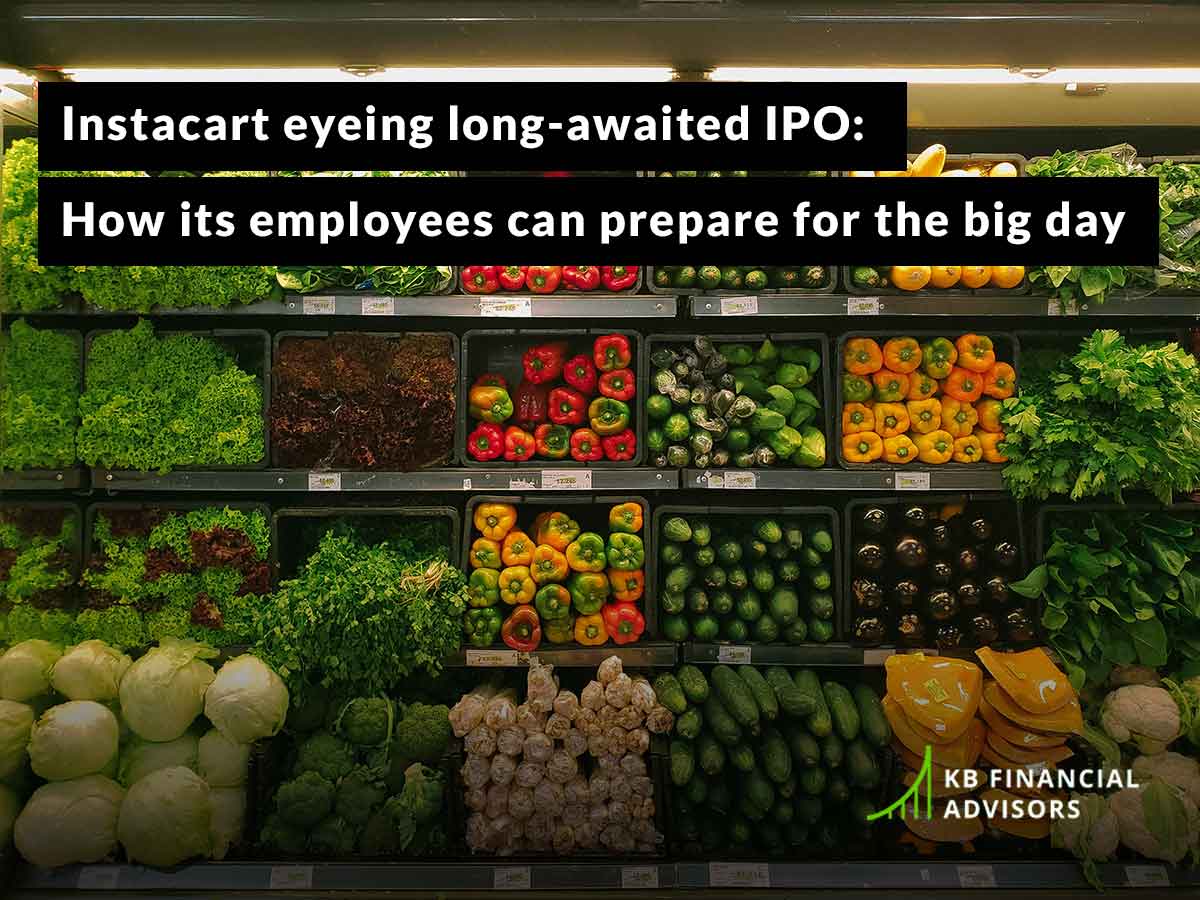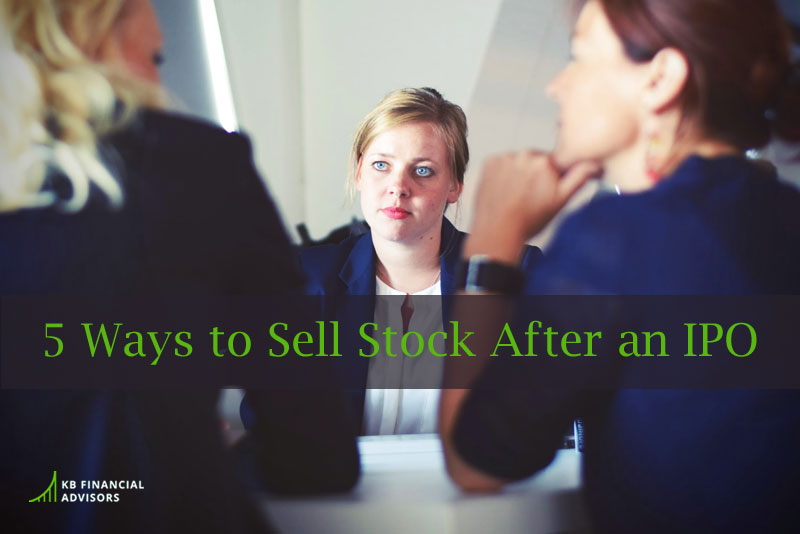Expert advice about maximizing your financial gains from the grocery-delivery tech company’s public debut, slated for September.
Following a nearly two-year dry spell, tech IPOs are seeming to finally pick up speed.
Klaviyo and Arm recently shook things up with their plans to go public in September. Now, grocery-delivery company Instacart is doing the same.
It’s been a long time coming for Instacart, which has had an on-again, off-again relationship with going public since late 2021. Like many other tech companies, Instacart held out for the perfect moment to go public so that its stock price would increase post IPO. 2022 seemed to be Instacart’s year but after confidentially filing for its public debut then, poor market conditions drove the company to hold off on its plans.
The previously tumultuous market kept Instacart in a limbo, but things are looking a bit less bleak now. Just a few weeks ago, its direct competitor DoorDash had an upbeat earnings call and lifted its forecast for the remainder of the year — potential indicators that Instacart is experiencing similar growth.
With signs of a thawing tech IPO market and promising performance from its rival, Instacart is reportedly eyeing a September public debut.
IPOs are a big deal for tech employees. For some, public debuts can even be a vehicle to achieving financial freedom. To make the most of this financial opportunity, Instacart employees (current and former) who own stock options or restricted stock units (RSUs) should begin planning for the big day.
Read this blog post to help gear up for your looming IPO and set yourself up for financial success.
See our previous post about Instacart: RSUs vs. Cash: Which Should I Choose Before a Tech IPO?
What Instacart’s traditional IPO means for you
There are different types of IPOs out there, and knowing which one your company opts for heavily influences your planning. Instacart is reportedly planning a traditional IPO on the Nasdaq instead of a direct listing. This means you’ll most likely see a listing followed by a six-month (or longer) lockout period before you’re able to sell your shares. Typically, lockout periods last six months, then after they expire, you must wait until the next quarterly earnings call before you can sell.
The great thing about traditional IPOs is you have plenty more time to plan for them — six to (potentially) nine months’ worth of time. Though your first trading window seems far into the future, now’s the time to start planning for it.
The timing of this looming IPO may also influence your taxes. If Instacart goes public in September, your first trading window won’t come for at least another six months, which means your IPO AND first trading window will be in different tax years (2023 and 2024, respectively). This opportunity could present a few different scenarios for you.
Arguably the most important detail you must know is when Instacart will release the double-trigger RSUs. With their time-based vesting schedule, double-trigger RSUs vest but the shares they’re tied to don’t release until the second trigger (the IPO). Your RSU grant agreement contains language about the IPO and the RSU release date, so get familiar with it. You also want to find out if Instacart just follows your RSU grant agreement, when your RSUs will release. This detail is critical because when your RSUs release, they become taxable to you as ordinary income. In Instacart’s case, you want to figure out which tax year your double-trigger RSUs will be taxable in — 2023 or 2024?
4 things to do before Instacart’s IPO
Now that you know the IPO is coming, you have some preparing to do to make it a fruitful one.
The first thing you’ll want to do is collect all your options, benefits, and paperwork together. Having all your options and IPO-based money-making opportunities in front of you will give you the full picture of what you’re working with. Then, follow these steps:
1. Aggregate
Your first step in smart IPO planning is to gather all your documents into one place regarding your vesting schedule, the amount of options you’ve vested thus far (or will vest by the IPO date), and everything you have that’s yet to vest in the future.
You’ll also want to gather any Instacart shares you currently own, especially if they’re founder’s shares or qualified small business stock (QSBS).
2. Determine your goals
From there, decide what your goals are before you dive deep into the monetary possibilities. This approach ensures your plans are in your best financial interest, and aren’t just about turning over cash as quickly as possible.
3. Figure out your projected tax bill
Then, look at everything that will vest on Instacart’s IPO date: Find out how many shares of the tech company you’ll have on the IPO date, and what Instacart expects the share price to be on that date. For example, if you have double-trigger RSUs that will vest into your possession on the IPO date, how many shares will you receive? And how much will they be worth?
Knowing the list price is also important because it’s your first data point for the stock price. You can use the list price in your calculations leading up to the IPO, then update your calculations as the price changes post IPO.
With that amount, figure out the minimum amount of money you’d need to set aside for taxes to cover that bill. Also figure out if and how many shares you’ll have to sell to cover said tax bill.
4. Consider exercising more options
If you’re going into Instacart’s IPO without any options exercised and without much of your RSUs vested, you may want to go ahead and exercise some of your incentive stock options (ISOs) to start the one-year holding period for long-term capital gains.
Instacart employees with ISOs should consider exercising up to the alternative minimum tax (AMT) this year, then maybe exercise all in January 2024.
Whether or not you do this depends on your unique financial situation and your goals, so make sure you talk with your financial advisor to make a plan you feel good about.
2 things to do before your first trading window opens
Though there’s a lot of anticipation for the day of your IPO, that’s not exactly the biggest countdown for your financial life.
Your IPO day may be fairly uneventful for your finances because of restrictions like employee trading windows. While some of your RSU may release into shares that add to your net worth, and your other options now have a set, tangible market value, there’s not much you can actually do about it.
There are, however, a couple of must-do items between now and when your first trading window opens, several months post IPO:
1. Figure out your taxes
Once Instacart’s IPO happens, the first thing I recommend you do is to note down the market price of the company’s shares. Then, use that number to calculate the additional tax you’ll owe, even if you don’t sell anything in their first trading window.
Most tech employees will see a significantly larger tax bill in the year an IPO occurs, because their double-trigger RSUs will vest into their possession as shares. (And if they’ve been working for the company for a while, that’s a lot of shares.)
After calculating your taxes, figure out what your additional income will be on top of your salary, what tax bracket that will put you in, and how much more tax you’ll owe after your company’s withholdings.
After running those calculations, make an appointment with your financial advisor to determine the best way to cover that bill, and when to make an estimated payment to cover it.
2. Choose a target selling price
Because you won’t be able to sell your shares for awhile, you’ll need to use the time right after the IPO happens to decide what price you’d be happy to sell your shares at. The idea is that when Instacart’s stock reaches this price, you’ll liquidate and cash out some of your shares.
Choosing a target price is important because a lot of employees get emotionally attached to selling “when it’s higher.” Without a clear number in mind, they actually end up losing out and not reaching their financial goals because they never sell or sell too late.
Work with your financial advisor to figure out your sell price based on market performance, company expectations, and your own personal financial goals.
For more info on this topic, read our post titled You’re an IPO Millionaire Worth $5 Million+ Now What?.
What to do at your first trading window
The real action starts when your first trading window arrives.
On this day, you’ll want to sell whatever amount of stock you need to cover your IPO tax bill, as well as the predetermined amount you set to get your financial goals rolling.
Whether you sell as much as you can upfront, decide to sell a little at a time, or sell by date-based lots as a way to cut down on your taxes; just make sure you take action and sell during this window. If not, you’ll have to wait until the next trading window, and there are no guarantees that the market price will be as high as it is now. (And if that’s the case, you’ll have to go back to the drawing board with your IPO planning.)
If the stock price is high and you want to exercise more than you initially thought, you can even do a same-day sale during your trading window; where you exercise some of your ISOs and turn around and sell them on the same day. Your taxes may be higher, but if the share price is high enough to make up for it, it could be a good financial decision.
Your Instacart IPO journey is just getting started
Once you get through everything from Instacart’s IPO announcement, down to your first trading window, you’ll have covered a lot of ground, but the work doesn’t end there. Learn more about long-term IPO planning in our more exhaustive blog post.
An IPO can be your once-in-a-lifetime opportunity to achieve financial freedom, so make sure you’re setting yourself up to win by working with a financial advisor who’s been there before.
KB Financial Advisors has helped clients through countless tech IPOs. We also have experience working with current and former Instacart employees. Tech professionals turn to our advisors to cover their blindspots and potentially save them hundreds of thousands of dollars.
Book a call today to talk to myself or another expert on our team about preparing for Instacart’s IPO.






